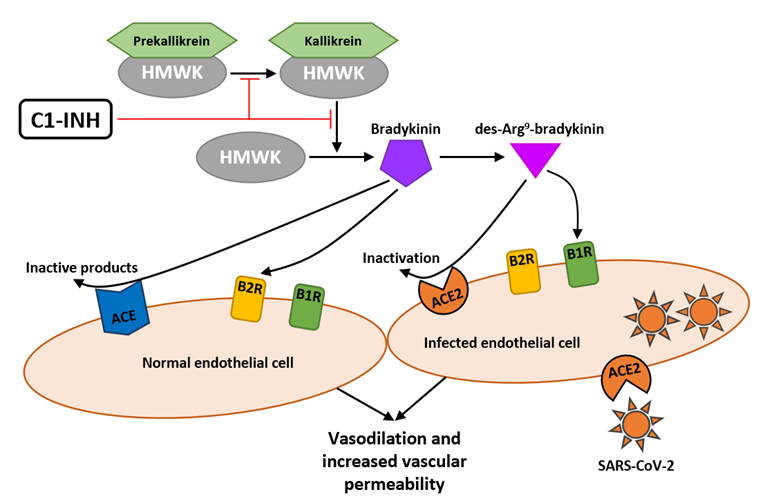Is There an Association Between Hereditary Angioedema and COVID-19?
In our second blog post on the topic of hereditary angioedema (HAE), we wanted to highlight a review article by Xu et al., which explored the possibility of an interaction between HAE and coronavirus disease 2019 (COVID-19), based on the pathophysiologic mechanisms underlying these two clinical conditions. We are particularly interested in this topic here at BEYOND Communication, because of the team’s experience and knowledge of HAE and other rare diseases.
In their article titled ‘Does hereditary angioedema make COVID-19 worse?’, Xu et al., speculate that COVID-19 may increase disease activity in patients with HAE and vice versa. HAE is a rare genetic disease, characterized by recurring attacks of subcutaneous and submucosal edema. In HAE type 1 and 2, deficiency of functional C1 inhibitor (C1-INH) leads to overactivation of the plasma contact system, resulting in excessive generation of the proinflammatory mediator bradykinin and its metabolite des-Arg9- bradykinin (Fig. 1). Binding of bradykinin to receptors on endothelial cells promotes vasodilation and increased vascular permeability, associated with attacks of angioedema. Severe acute respiratory syndrome coronavirus 2 (SARS-CoV-2) – the causative agent of COVID-19 – enters host cells via angiotensin-converting enzyme 2 (ACE2), resulting in a reduction in membrane expression of ACE2. ACE2 cleaves des-Arg9-bradykinin and, hence, the depletion of ACE2 leads to an accumulation of des-Arg9-bradykinin and possibly bradykinin via a negative feedback to bradykinin degradation. Therefore, it is feasible that HAE might favor COVID-19 progression and worsen its outcomes. Conversely, COVID-19 may worsen existing HAE or facilitate the onset of HAE in asymptomatic carriers of HAE-related mutations.
Here at BEYOND, we will continue to follow this topic closely!
Figure 1: Possible interaction between HAE and COVID-19, based on underlying pathophysiologic mechanisms.

ACE, angiotensin-converting enzyme; ACE2, angiotensin-converting enzyme 2; B1R, bradykinin receptor B1; B2R, bradykinin receptor B2; C1-INH, C1 inhibitor; COVID-19, coronavirus disease 2019; HMWK, high-molecular-weight kininogen; SARS-CoV-2, severe acute respiratory syndrome coronavirus 2
Adapted from Xu Y, et al. (2020).
Reference
Xu Y, et al. World Allergy Organ J. 2020;13:100454
